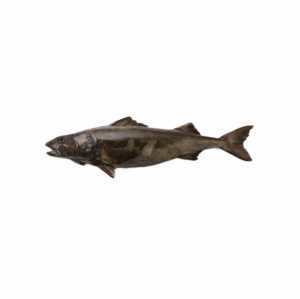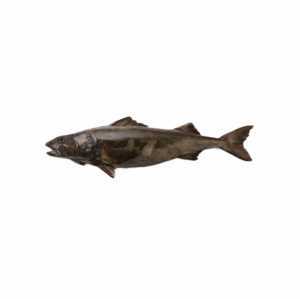King crab
Because of its wide range of habitats stretching across the state from the Norton Sound to the Southeast, Alaska king crab can be fished across much of the year. Although, catch is severely restricted by size and season. Only males with a carapace of at least 6.5 inches can be caught and harvest is restricted during mating.
Black cod
Caught between the middle of March and the middle of November, black cod are fished in the Bering Sea, the Gulf of Alaska and Southeast Alaska. While juvenile fish tend to stick to shallow waters, once they reach maturity they live at depths of 500-5,000 feet when fully grown. They can live for up to 90 years.
Halibut
Fished across the Aleutian Islands, Bering Sea, Gulf of Alaska and Southeast Alaska, halibut is an abundant fish across the state of Alaska which can be caught between mid-March and mid-November. They are usually fished through longlines which sit along the seabed, which, as a flat fish,is their primary habitat.
Sockeye salmon
With an interesting life cycle that takes them from fresh water to the ocean and back again when it's time to spawn, sockeye salmon are a unique species. They tend to be fished in the Bering Sea, Gulf of Alaska and Southeast Alaska throughout the months of June to September using purse seines and gillnets.
Alaska pollock
The largest sustainable fishery in the United States, the Alaska pollock fishery works across the Aleutian Islands, the Bering Sea and the Gulf of Alaska throughout the months of January to April, and June to October. They are primarily fished for using pelagic trawlers which fish in mid-water to avoid damage to the sea floor.
King crab
Because of its wide range of habitats stretching across the state from the Norton Sound to the Southeast, Alaska king crab can be fished across much of the year. Although, catch is severely restricted by size and season. Only males with a carapace of at least 6.5 inches can be caught and harvest is restricted during mating.
Black cod
Caught between the middle of March and the middle of November, black cod are fished in the Bering Sea, the Gulf of Alaska and Southeast Alaska. While juvenile fish tend to stick to shallow waters, once they reach maturity they live at depths of 500-5,000 feet when fully grown. They can live for up to 90 years.
Halibut
Fished across the Aleutian Islands, Bering Sea, Gulf of Alaska and Southeast Alaska, halibut is an abundant fish across the state of Alaska which can be caught between mid-March and mid-November. They are usually fished through longlines which sit along the seabed, which, as a flat fish,is their primary habitat.
Sockeye salmon
With an interesting life cycle that takes them from fresh water to the ocean and back again when it's time to spawn, sockeye salmon are a unique species. They tend to be fished in the Bering Sea, Gulf of Alaska and Southeast Alaska throughout the months of June to September using purse seines and gillnets.
Alaska pollock
The largest sustainable fishery in the United States, the Alaska pollock fishery works across the Aleutian Islands, the Bering Sea and the Gulf of Alaska throughout the months of January to April, and June to October. They are primarily fished for using pelagic trawlers which fish in mid-water to avoid damage to the sea floor.

